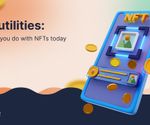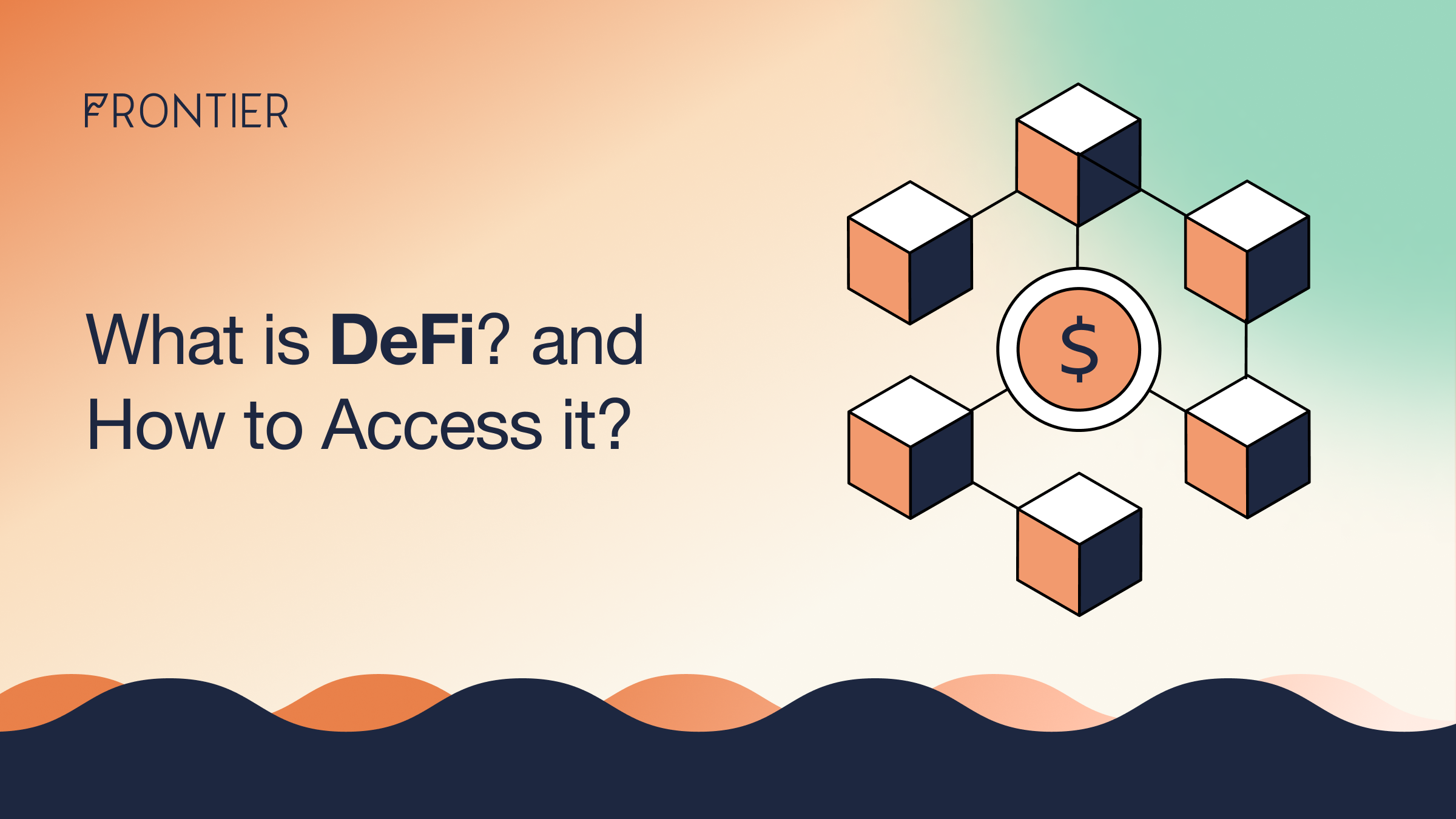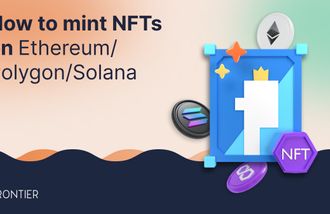

Minting NFTs on a network that provides speed, security, and cheap rates is one of the goals of most NFT traders. More investors are trooping in to be part of a collection or creating one themselves. The aggravated sales of NFTs for 30 days were valued at about $45.1 million on July 15, 2022, with over 3,200 NFTs sold per day. This is a definitive guide to minting NFTs across the Ethereum blockchain, Polygon, and Solana.
But why are NFTs such an intriguing technology? The ability of non-fungible tokens—NFTs to prove ownership and provenance of digital assets has no doubt made them the most popular application of blockchain technology to date. Today, NFTs are finding use cases across multiple industries and sectors, and are rapidly being integrated into contemporary society by both individuals and businesses.
What started as a solution for artists and creatives, is now being applied in supply chain tracking, fashion, games, events and ticketing, music, healthcare, education, and more. The increasing adoption of NFTs has seen total NFT sales rise to approximately $1.8 billion per month. The global NFT market went from being valued at around $1 million in 2020 to hitting over $3 billion in market capitalization in mid-2022.
NFTs are rapidly being established as the next cultural phenomenon. And will continue to lead the adoption of blockchain-based solutions into the mainstream population. Therefore, there's no better time to learn how to interact with NFTs. As the NFT space continues to gain more traction, more people are looking to get involved. This article explores everything there is to know about minting and deploying NFTs on multiple blockchain networks.
What is NFT minting?
Minting an NFT means printing and storing a unique identifier on the blockchain which represents a digital or physical asset. NFT minting is the process of converting digital files into tokens that are stored on the blockchain. This process is also called tokenization. Minting makes it practically impossible to alter or delete digital assets because the NFTs are stored on a distributed ledger or decentralized database.
In most cases, the actual digital asset is not stored on the blockchain. Only an asset's metadata is stored on the blockchain. This is because the structure of blockchains makes it impractical to store large files on them. For example, to tokenize a 1GB video file. Minting here simply means creating a unique identifier for the video file. This unique identifier will contain the video's metadata such as name, format, duration, etc. This NFT will be stored on the blockchain while the actual video can be uploaded to a decentralized file storage system such as Filecoin or Arweave. An exception here is digital files with negligible sizes like pixelated artworks which can be stored directly on-chain. Storing large files on blockchain networks makes them slow and computationally expensive.
What is Lazy minting NFT
There are several ways to mint an NFT on-chain. Some are more technical than others. Generally, minting an NFT on a blockchain mainnet costs money because posting data on the blockchain requires a gas fee for computation and storage. This often presents a barrier for NFT creators, new creators who may not want to invest a lot of funds before knowing the secondary market value of their work. To solve this problem, the lazy minting concept was developed.
Lazy minting is the process of deferring the minting of an NFT until the moment of purchase. This allows NFT creators to sign minting authorizations that allow a buyer to mint NFTs at a later time. These mint authorization signatures are free to produce and guarantee no NFTs can be minted without prior approval. This way, buyers pay the minting fee when purchasing the NFT. Many NFT marketplaces offer lazy minting services to lower the barrier to NFT creation for users by making it affordable and equitable.
Lazy minting reduces the impact of gas fees by shifting gas fee payments to post-sale. It encourages liquidity because the NFTs are only transferred after being sold. This helps prevent sellers from being left with a collection of minted, unsold NFTs, and buyers aren’t left waiting indefinitely for the NFT to be transferred to them. However, choosing lazy minting means that the NFT creator has no control over who purchases their work and when it is transferred.
Minting NFTs provides the much-needed gateway to a democratized global market for buying, selling, and owning rare and unique digital assets. It gives creatives more control over their IP and enables unregulated access to a global network of art and other digital item collectors.
Types of NFT projects
NFTs fall into different categories depending on how they are created. They can be 1-of-1, a collection with many unique individual NFTs, or the same NFT with multiple editions.
Generative NFTs
A popular concept in NFT creation is the combination of a set number of designs from traits such as background, eyes, outfit, accessory, facials, etc., as layers into a piece of art, and randomly varying each layer to produce a large quantity of individual unique NFTs as a collection. This is done algorithmically using a set of established rules and guidelines stored in a smart contract code. The smart contract code will randomly select one variation for each trait and layer it on top of another to create a unique design. This is done repeatedly until the specified number of NFTs is produced. PFP NFTs like Bored Apes and CryptoPunks are popular examples of generative NFTs. Other generative art NFTs include the Autoglyphs, Fidenza collections, and more.
One-of-one (1/1) NFTs
Every NFT is associated with a mint number. A mint number represents the edition of an NFT in a collection. It can be 1/10, 1/100, or 1/10000, e.tc. A mint number plays a role in differentiating between two or more NFTs with the same design. It also adds an extra layer of rarity to an NFT. 1/1 NFTs are issued as a single, unique edition, and not generated in bulk. No other exists other than the singular piece itself. 1/1 NFTs are highly scarce and as such considered extremely valuable. 1/1 NFTs can be most forms of art like drawing, photography, music, writing, trading cards, videos, or podcasts. They are mostly ideal for creators who want to only have 1 copy of their art available for ownership.
Music NFT
Music artists like renowned rapper Snoop Dogg have created NFT albums and even performed concerts on the metaverse. Music NFTs enable an artist to get royalty directly for his work rather than having music producers and establishments get a chunk of their earnings. Music NFTs can be a tokenized version of a music album, a song, or a music video. Platforms like Royal, Sound.xyz, and OneOf’s CO//SIGN program allow artists to earn and retain the creative control of their music through NFTs.
Gamified NFT
The introduction of NFT games like CryptoKitties did not only launch in the era of NFTs but also game finance (GamFi) bringing in an era where people can play to earn (P2E). Gaming NFTs allow gamers to sell their game characters, skins, and even weapons. Games like Axie Infinity, Unchained, and Decentraland enable their users to sell their NFTs and still P2E.
Choosing the right blockchain platform to mint NFT
There are different ways to mint an NFT. Moreso, the proliferation of NFT marketplaces in recent years has made the NFT minting process very easy. However, there's a lot of thought that needs to go into turning an item into an NFT. This is because once an item has been minted into an NFT and printed on-chain, there's no modifying or tampering with it. Therefore, it is important to make the right decisions that will ensure you get it right. One of the biggest decisions in minting an NFT is choosing the right blockchain network on which the NFT will live on. There are many factors that can determine what platform a user might choose to mint their NFT on. These include;
Size of project
Blockchains are different and possess varying characteristics and capabilities. For a single NFT, there might be no need to think much about which blockchain to mint on. The choice here can be based solely on the creator's personal preference. However, larger NFT projects might require a lot of market participation. It is important to carefully consider the network that will best suit the needs of the project. Sometimes, a project might require the creators to build a separate blockchain to meet its specific needs. A good example is the Ronin sidechain which was built as a parallel network to Ethereum to help scale the popular NFT game, Axie infinity.
Type of item/digital file
Digital items can be in the form of art, music, documents, etc. And because any digital item can be minted into an NFT, it becomes relevant which blockchain an item can be minted on. Some blockchains are more suited for music-type items, others work well for gaming NFTs. The point is, depending on the type of NFT to be created and the attributes they need to have, a user's choice of blockchain will vary. For example, the Flow blockchain has an attractive feature that lets users upgrade smart contracts. Upgradable smart contracts are exceptionally versatile and can allow users to create NFTs with unique utilities such as dynamic NFTs.
Network fees
Fees are a constant variable in every blockchain operation. Most transactions carried out on a blockchain require some processing service fees to be paid. These fees vary from blockchain to blockchain. In some blockchains like Solana or Polygon, they are negligible, while Ethereum is notable for its high fees. Therefore, network fees are a major factor to consider in choosing which blockchain to mint NFTs on.
Network speed
Another factor is the speed of processing transactions on the network. For high-traction NFT projects like games, transaction speed is critical. Blockchains like Ethereum which processes around 15 transactions per second might not be ideal for these types of projects. Creators might choose to deploy their NFT projects on faster networks such as Solana which does around 65,000 transactions per second.
Network effects
This is arguably the most valuable factor that influences the choice of blockchain selection in minting NFTs. Blockchains with a huge ecosystem offer a high degree of liquidity and tradability for projects that need to gain traction. Blockchains with limited reach might not be ideal for big projects. Ethereum is the most popular and dominant blockchain for NFTs. Despite its high fees, it is often chosen by creators who are looking to build off of its massive network effects. It is also where the most frequented marketplace, OpenSea lives. This means that NFTs on the Ethereum network are more liquid and can be traded more easily than those on smaller blockchains.
Crypto wallet of choice
A user's cryptocurrency wallet of choice is an important factor to consider in choosing a blockchain network for NFT minting. Blockchains are inherently segregated. Most have their own native wallet infrastructure. Ethereum blockchain works well with its native wallet, Metamask. But a user cannot use Metamask to interact with the Solana blockchain. There's also the question of security when accessing a blockchain with a crypto wallet. Therefore, choosing a secure cryptocurrency wallet that is compatible with the blockchain of choice is essential. Fortunately, Frontier provides the best alternative. The leading DeFi mobile wallet aggregator supports a wide range of blockchains and thereby makes it easy for users to access multiple blockchain ecosystems from a single interface without having to install a separate wallet each time they want to switch to a different network.
Minting NFTs on Ethereum NFT marketplaces
The easiest and most popular way to mint NFT on the Ethereum network is by using OpenSea or any other NFT marketplaces on Ethereum. OpenSea is easy to use and supports all types of NFTs. Users can mitigate Ethereum's high gas fees by using the lazy mint feature on OpenSea.
How to mint on OpenSea NFT marketplace
Step 1
Fund your Frontier wallet with ETH => Go to opensea.io and click on the "Create" button on the top right corner to connect your wallet.
Step 2
Select "WalletConnect" to connect your Frontier wallet => Accept the platform's terms and conditions by signing the signature request prompted on your wallet.
Step 3
Your profile will be created. Enter a username and an email address to verify your account. After verifying your account, you can mint NFT on Ethereum through OpenSea by clicking on the "Create" option in the top right corner.
Step 4
Upload your digital item in a supported file format, name your NFT and input the necessary metadata. Then click the "Create" button at the bottom of the form.
Now that you have succeeded to mint NFT on Ethereum, it is stored on the blockchain. You can then go on to list your NFT for sale on the platform if you choose. Listing your NFT up on OpenSea costs ETH. Users are required to pay a one-time fee in ETH for a process called "Initialization" before they can list an NFT for sale. Network fees vary depending on traffic.
How to mint NFT on Polygon marketplace
Polygon is considered a parallel network to Ethereum. It is an EVM-compatible sidechain that acts as a scaling solution to the Ethereum mainnet. This means that users can equally mint an NFT on Polygon using OpenSea in a similar process, by switching the network from Ethereum to Polygon.
Alternatively, users can mint NFT on Polygon’s NFT Minter which allows for more flexibility and extra utilities such as choosing a standard and adding autographs, etc.
How to mint NFT on Polygon’s NFT Minter
Step 1
Go to https://mintnft.today/ and click on the "Mint your NFT" button => Connect your Frontier wallet using "WalletConnect"
Use "Quick Mint" for a fast but limited NFT mint, or select "Pro Mode" for more flexibility.
Step 2
Select "Pro Mode" and choose an ERC standard for your NFT => Upload the digital file, add the necessary metadata and click on "Confirm Edits" => Click the "Mint" button to mint your NFT.
Step 3
You can choose to add extra utilities such as autographs, phygital, and other unlockable contents that are only visible to holders of the NFT. Deploy and list your NFT on OpenSea.
How to mint NFT on Solana
Solana is lauded as the fastest blockchain network. Its significantly faster transaction times and very low gas fees make it the blockchain of choice for many users and creators. And it has one of the biggest NFT ecosystems after Ethereum. Solana has its own NFT marketplaces where users can mint and trade NFTs. Some of the notable ones include SolSea and Solanart. Moreso, the biggest NFT marketplaces outside of the Solana ecosystem also supports Solana-based NFTs. You can mint NFT on Solana using OpenSea or Rarible in the same process. However, to access the Solana ecosystem, users need to use the network's native wallet, Phantom.

Conclusion
NFT minting has gotten better and easier over the years. Users can now create and list their NFTs on any secondary market of their choice with ease. Also, the cost of minting on expensive blockchains like Ethereum is being brought down by innovative solutions like the lazy minting feature offered by many NFT marketplaces. Furthermore, DeFi mobile aggregator wallets like Frontier make it easier for users to connect and mint their NFTs on multiple blockchains without having to install separate wallets each time. This further improves user experience. As the broader NFT ecosystem grows, basic infrastructure such as the Frontier DeFi mobile wallet will continue to be pivotal in lowering the barrier to entry and facilitating general user adoption.

Head, Communications & Content



